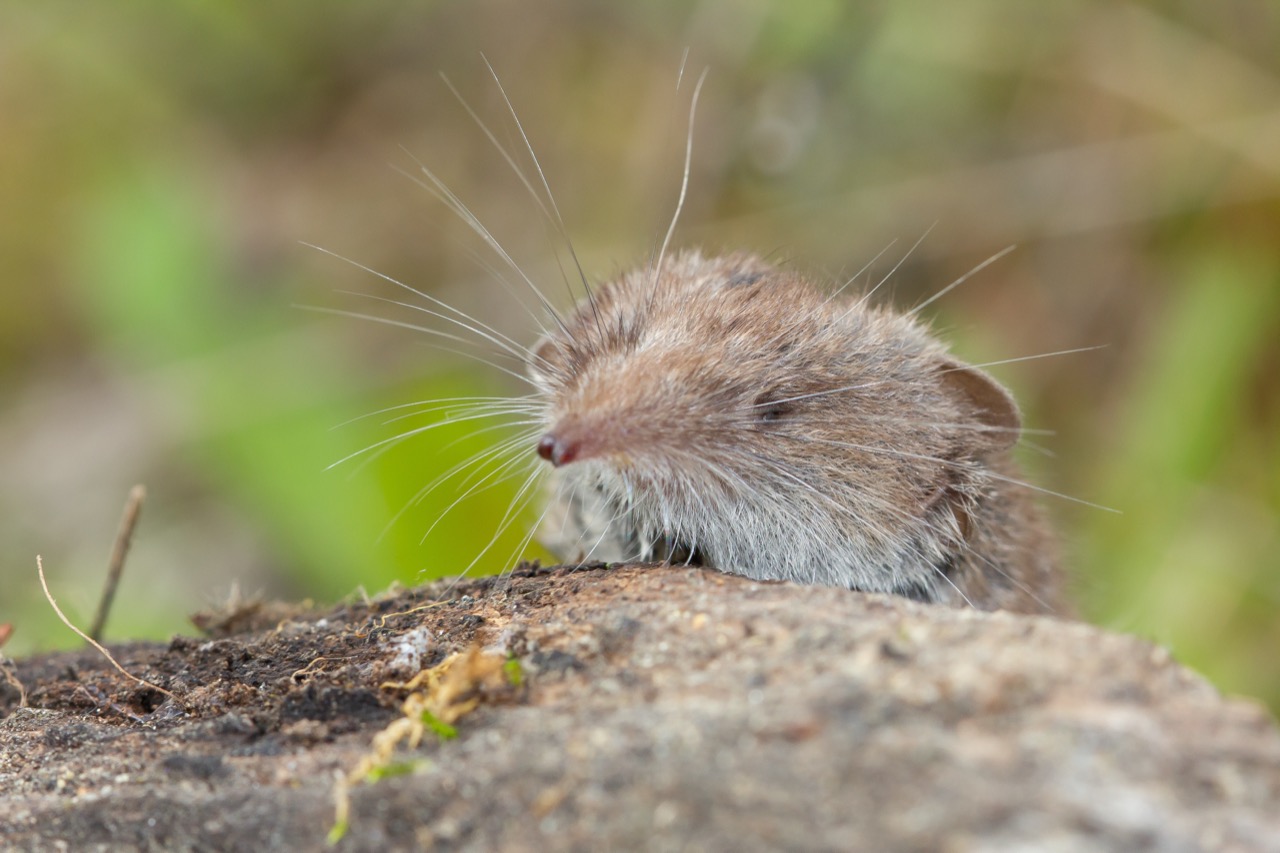In the vast tapestry of the animal kingdom, few creatures are as intriguing and less understood than the common shrew. This tiny mammal, often mistaken for a mouse, plays a crucial role in the ecosystem. Despite its small size, the common shrew is a voracious predator, and its behaviors and adaptations make it a fascinating subject for study.
Characteristics / Physical Description
The common shrew (Sorex araneus) is diminutive but mighty. Typically measuring only 3 to 4 inches in length, including the tail, it is characterized by a pointed snout, tiny eyes, and velvety fur, which ranges in color from dark brown to gray. One of the most distinctive features of shrews is their long, whisker-tipped snout, which they use adeptly to detect prey. Additionally, shrews possess sharp, spike-like teeth, which unlike those of rodents, are not for gnawing but for piercing and holding onto their prey.
Taxonomy and Classification
Shrews belong to the family Soricidae, which is distinct from rodents and includes other small insectivorous mammals. The common shrew is one of the many species within this family, each adapted to specific habitats and ecological niches. Despite their small size and similar appearances, shrews are genetically diverse, which has fascinated geneticists and ecologists alike.
Behavior and Social Structure
Shrews are primarily solitary and highly territorial animals. They exhibit aggressive behaviors towards others of their species, especially during the breeding season. Their life is seemingly a constant hunt for food; shrews eat every 2 to 3 hours to support their extraordinarily high metabolism. This intense need for energy also means shrews rarely hibernate, remaining active year-round.
Habitat and Distribution
The common shrew is widely distributed across Europe and parts of Asia. It thrives in a variety of habitats, from woodlands and meadows to hedgerows and gardens. Their adaptability to different environments is key to their survival, often making homes in leaf litter where they can hide from predators and seek out insects.
Diet and Feeding Habits
Insectivorous by nature, the common shrew feeds on insects, spiders, worms, and occasionally small amphibians and rodents. Their diet is crucial in controlling the population of soil and leaf-litter invertebrates, which helps maintain ecological balance. Remarkably, shrews have the ability to consume up to three times their body weight in food daily.
Breeding and Reproduction
Shrews have a rapid breeding cycle and a short lifespan, typically only living for about a year. Females can have two to three litters per year, each consisting of up to ten young. The young shrews grow quickly and are independent within a month, although their chances of survival are slim, with high mortality rates in the wild.
Relationship with Humans
While often unnoticed or misunderstood due to their elusive nature and nocturnal habits, shrews are beneficial to gardeners and farmers as natural pest controllers. However, they can sometimes be mistaken as pests themselves. Education about their role in the ecosystem can help foster a more positive human-shrew interaction.
Evolutionary History
Shrews are ancient animals, with fossil records dating back to the Eocene epoch. Their evolutionary success is attributed to their high metabolic rate and rapid reproductive cycle, traits that have allowed them to survive and thrive in changing environments over millions of years.
Use as Research Animals
Due to their unique metabolic characteristics and rapid life cycle, shrews have occasionally been used in scientific research, particularly in studies of metabolic regulation and aging processes.
The common shrew, though small and often overlooked, is a marvel of evolution, perfectly adapted to its ecological niche. Its role in the natural world is as significant as any of the larger, more charismatic animals, serving as a reminder of the complexity and interconnectedness of our ecosystems.

